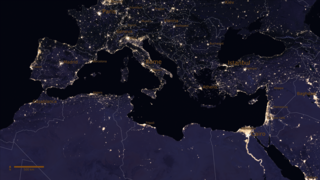Earth
ID: 30554
Yellowstone National Park is globally recognized for preserving the majority of the world’s geysers and is home to perhaps the most intact ecosystems in the lower United States. Coniferous forests dominate much of the park’s 900,000 hectares, providing habitats for many species including grizzly bears, black bears, wolves, mountain lions, wolverines, coyotes, bison, and elk.
This visualization shows projected changes in late spring (May) temperatures for the U.S. from 1950-2100 using the NASA Earth Exchange Downscaled Climate Projections (NEX-DCP30) model. The results show how Yellowstone’s average May temperatures are expected to increase from below freezing to above freezing by 2100. These temperatures will impact the timing of snowmelt and summer soil moisture, which will subsequently influence the length of the fire season. The U.S. National Park Service is collaborating with scientists from NASA, Montana State University, Woods Hole Research Center, and Colorado State University to project the effect of climate change on dominant trees species and ecosystem functioning. Average temperatures in Yellowstone have already increased by at least 1.1 degrees Celsius over the past century. In fact, many trees in Yellowstone are already exhibiting signs of stress—e.g., browning and dying from infestations of forest insect pests and diseases.
Climate Change in Yellowstone
For More Information
Credits
Mark Malanoski (GST): Lead Animator
John Gross (U.S. Park Service): Scientist
Heather Hanson (GST): Writer
John Gross (U.S. Park Service): Scientist
Heather Hanson (GST): Writer
Please give credit for this item to:
NASA's Goddard Space Flight Center/U.S. Park Service
NASA's Goddard Space Flight Center/U.S. Park Service
Short URL to share this page:
https://svs.gsfc.nasa.gov/30554
Data Used:
Note: While we identify the data sets used in these visualizations, we do not store any further details nor the data sets themselves on our site.
Keywords:
SVS >> Climate
SVS >> HDTV
SVS >> Temperature
SVS >> Temperature Trend
SVS >> Yellowstone National Park
SVS >> Hyperwall
SVS >> Climate Change
NASA Science >> Earth
SVS >> Presentation
https://svs.gsfc.nasa.gov/30554
Data Used:
NASA Earth Exchange (NEX) Downscaled Climate Projections (NEX-DCP30)
Model - 1950-2100Keywords:
SVS >> Climate
SVS >> HDTV
SVS >> Temperature
SVS >> Temperature Trend
SVS >> Yellowstone National Park
SVS >> Hyperwall
SVS >> Climate Change
NASA Science >> Earth
SVS >> Presentation











